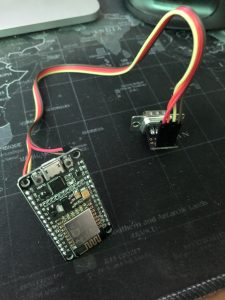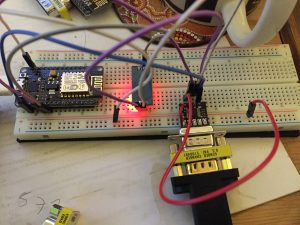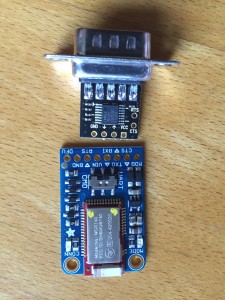Things are moving on gradually…
I’ve fixed all the problems with the architecture of the app and it’s now working as fast as a PC connected via a serial cable when it comes to creating log files, in the region of 16 lines per second on an MS1/Extra. I have 2 more screens to update to iOS7+ compatible and I’ll be looking, finally, at a release. The new architecture has opened up a number of possibilities as well as removing many of the stumbling blocks that were limiting it’s performance.
One of the more recent problems being experienced is a practical one since MicroChip bought out Roving Networks and pulled the rug out from underneath the simplest and cheapest connection option. Obviously one solution to this has been to start looking at BlueTooth interfaces but in tandem to that I’ve also been looking at a much lower cost WiFi option that uses a couple of “off the shelf” modules hooked together. Initial results have been good and it would bring the cost of a WiFi adaptor down to less than £12 ($15USD) but it will need to be flashed with some simple custom code that I’m going to release as an open source project. The software to compile and upload the software to the module is free and you just need a USB cable to flash the module.
This is actually a much better solution than the RN134 as it offers a secure, password protected, connection and a customisable web interface to configure it and, being so much cheaper, will be a good option.
I may be adding banner advertising to the app in an attempt to help it pay for itself. Although the donation model worked initially it’s not covered the costs of developing the app or hosting this web site, let alone the cost of MegaSquirt ECUs to test against. Banner advertising has proved reasonably successful in my other apps as a way of generating a small but steady revenue that might, at least, help offset some of the costs.
 As a side project I’ve been playing around with the possibilities for a cheap WiFi adaptor to support the app, as an alternative to Bluetooth. This has been bubbling away for a while now but today I finally got to spend some more time on it and have a simple working prototype that allows the WiFi module to be configured via a web interface, including password protection, baud rates, WiFi access point name. You can also get it to connect to another WiFi network.
As a side project I’ve been playing around with the possibilities for a cheap WiFi adaptor to support the app, as an alternative to Bluetooth. This has been bubbling away for a while now but today I finally got to spend some more time on it and have a simple working prototype that allows the WiFi module to be configured via a web interface, including password protection, baud rates, WiFi access point name. You can also get it to connect to another WiFi network.

